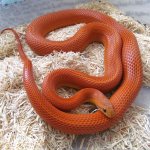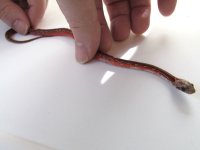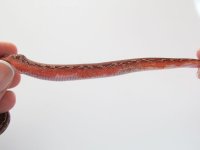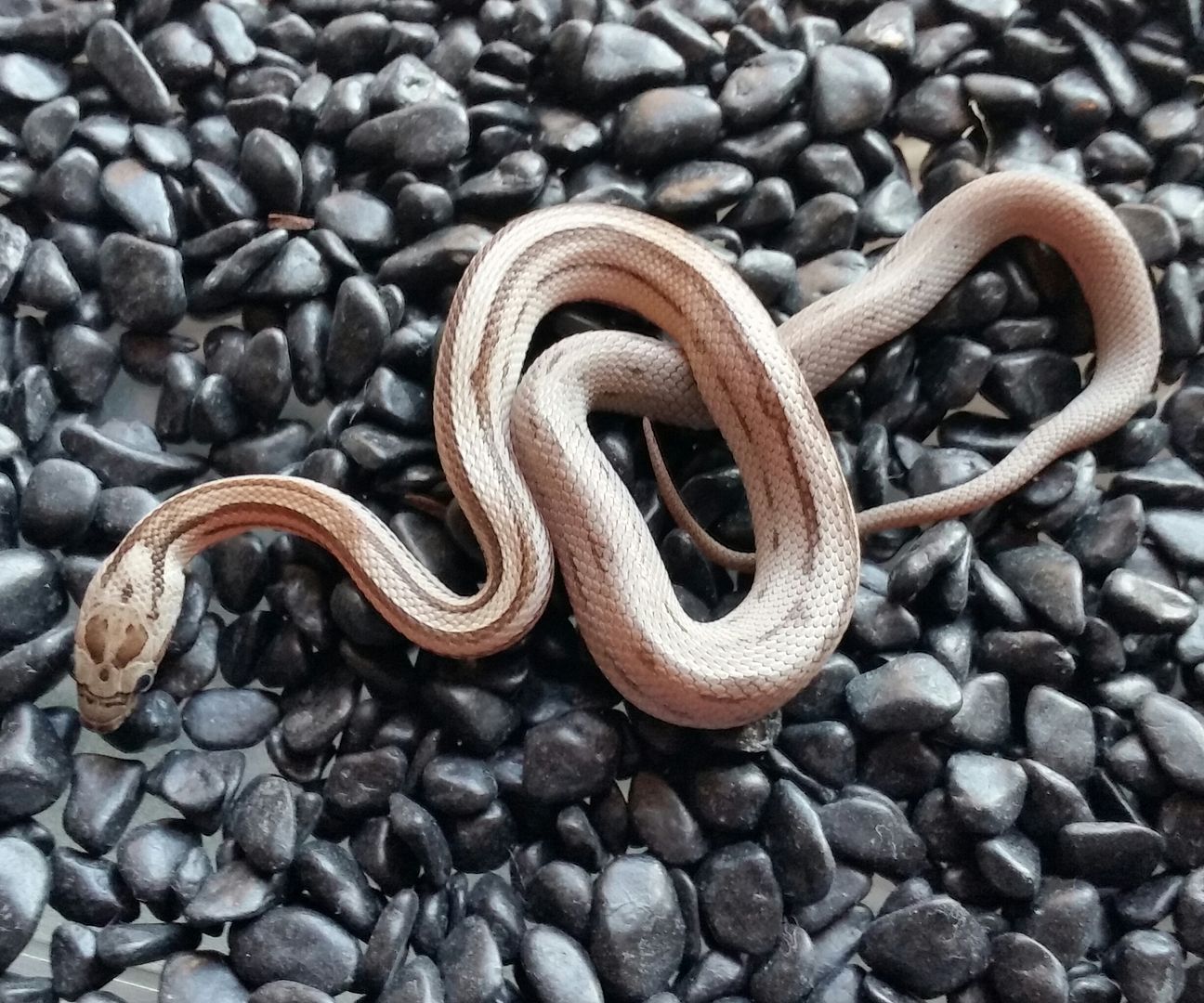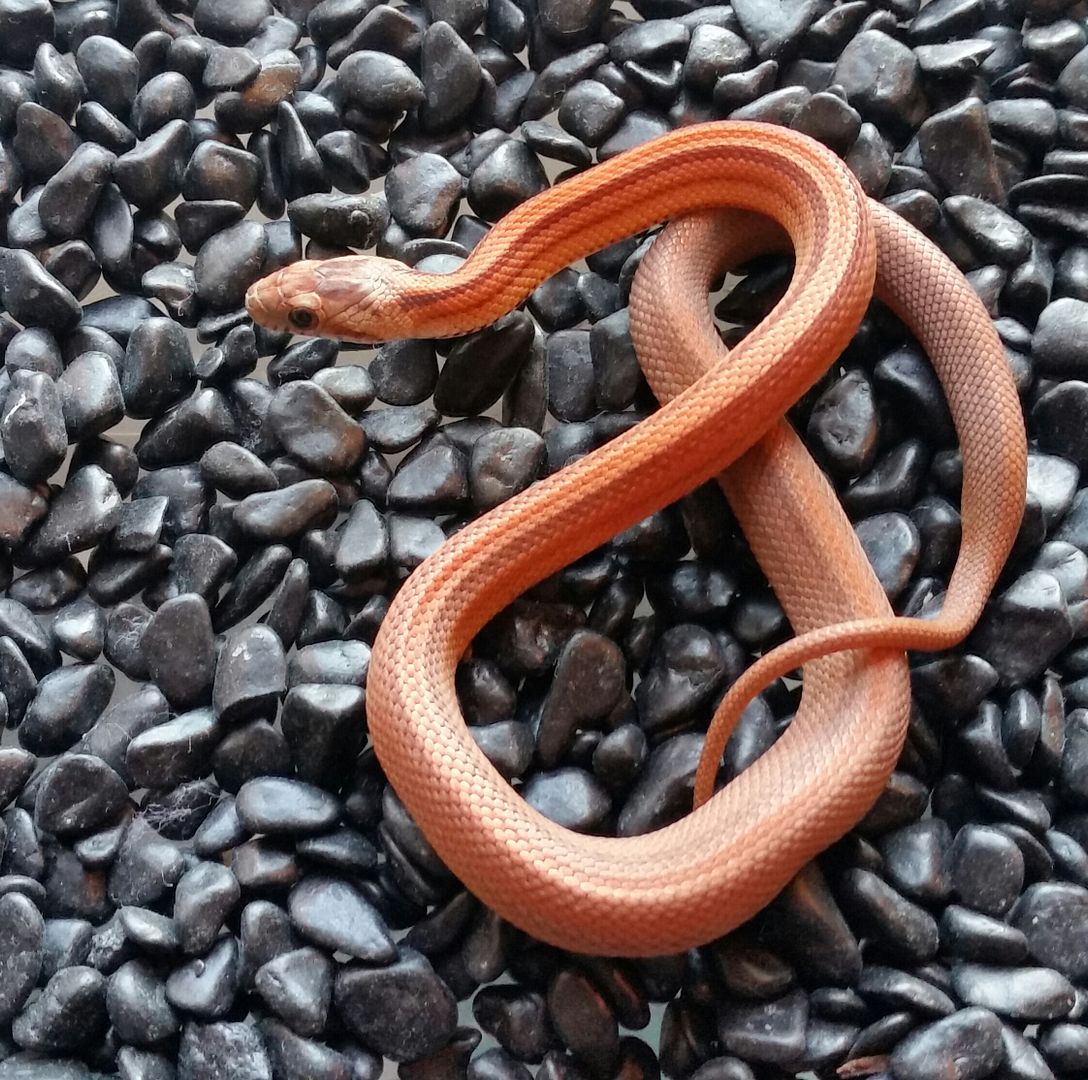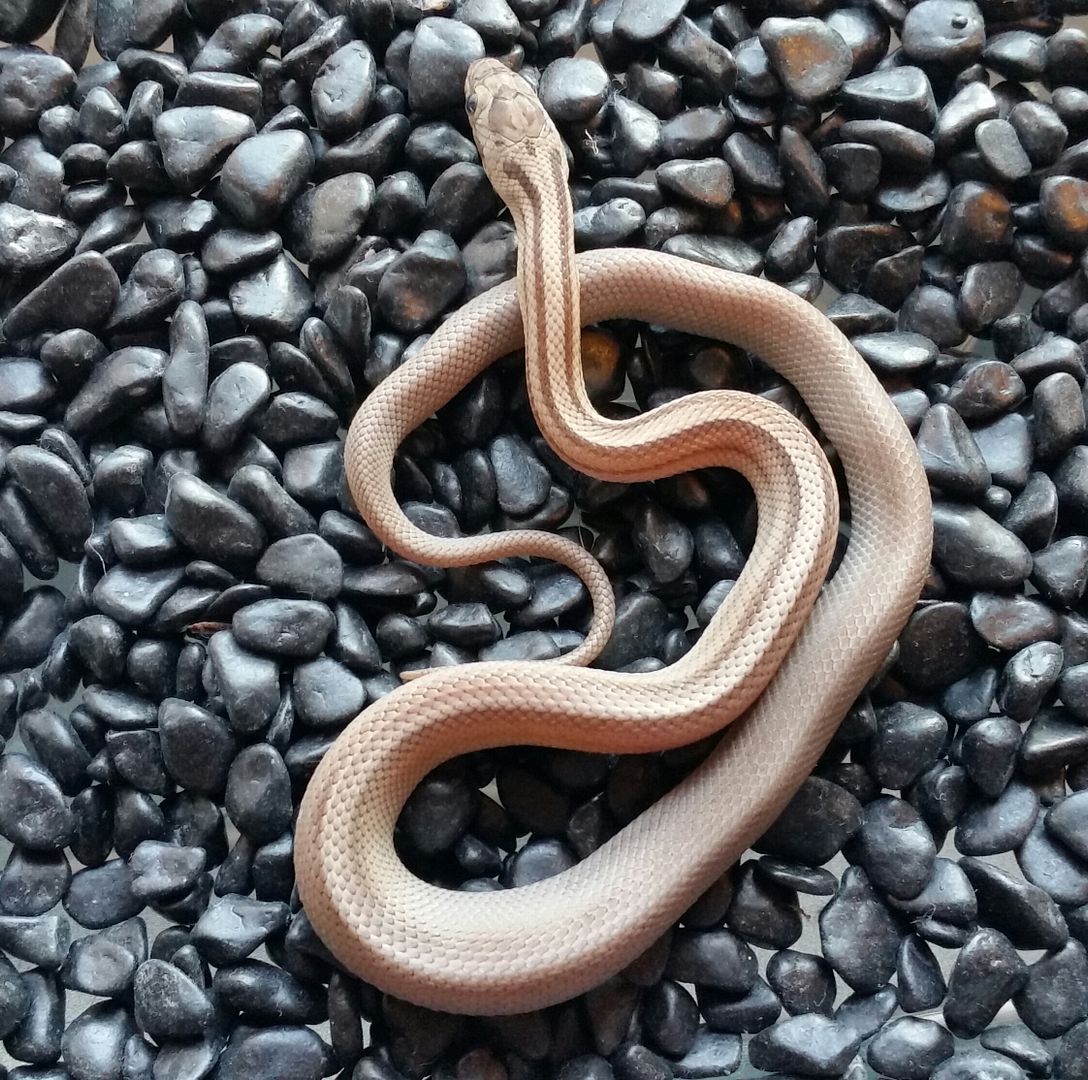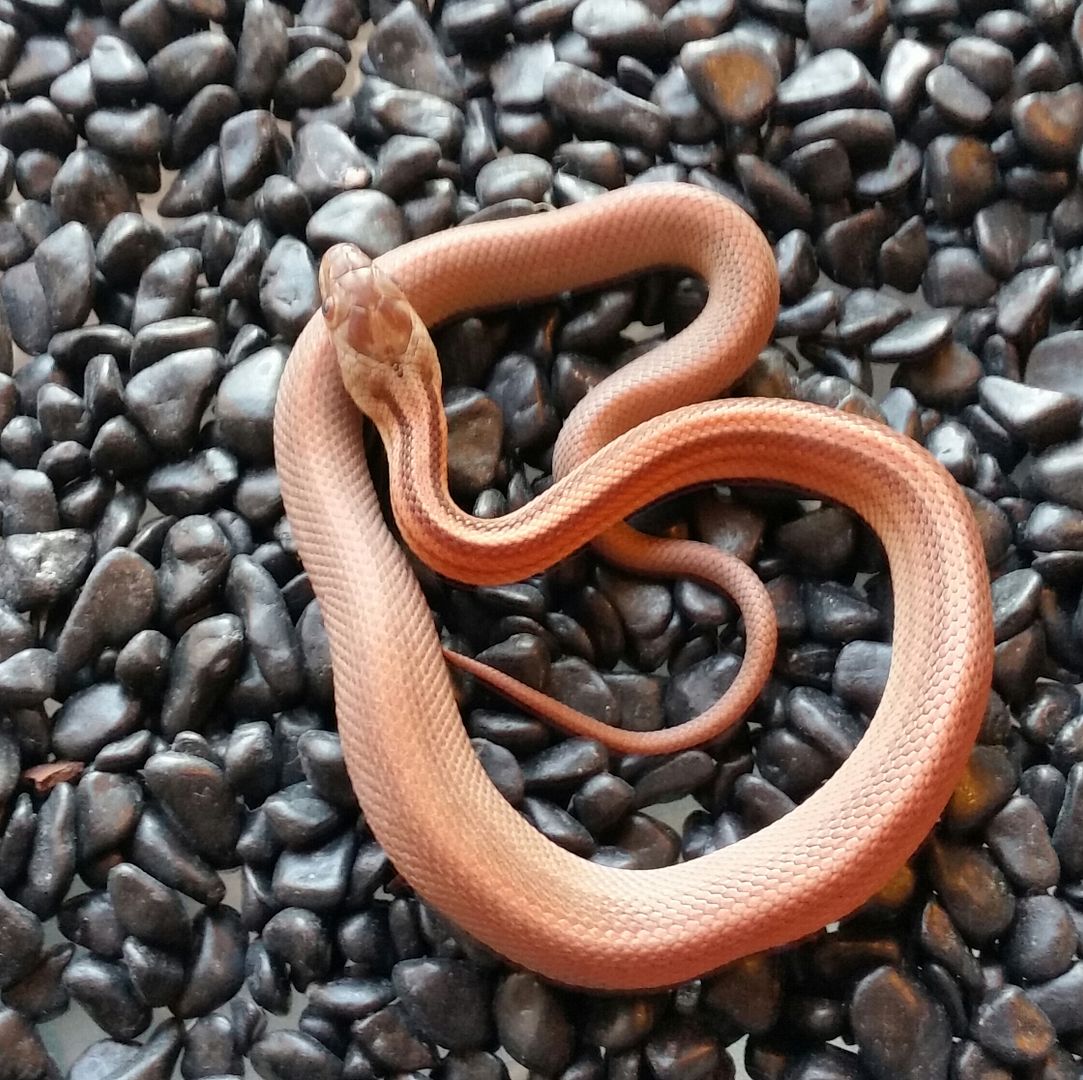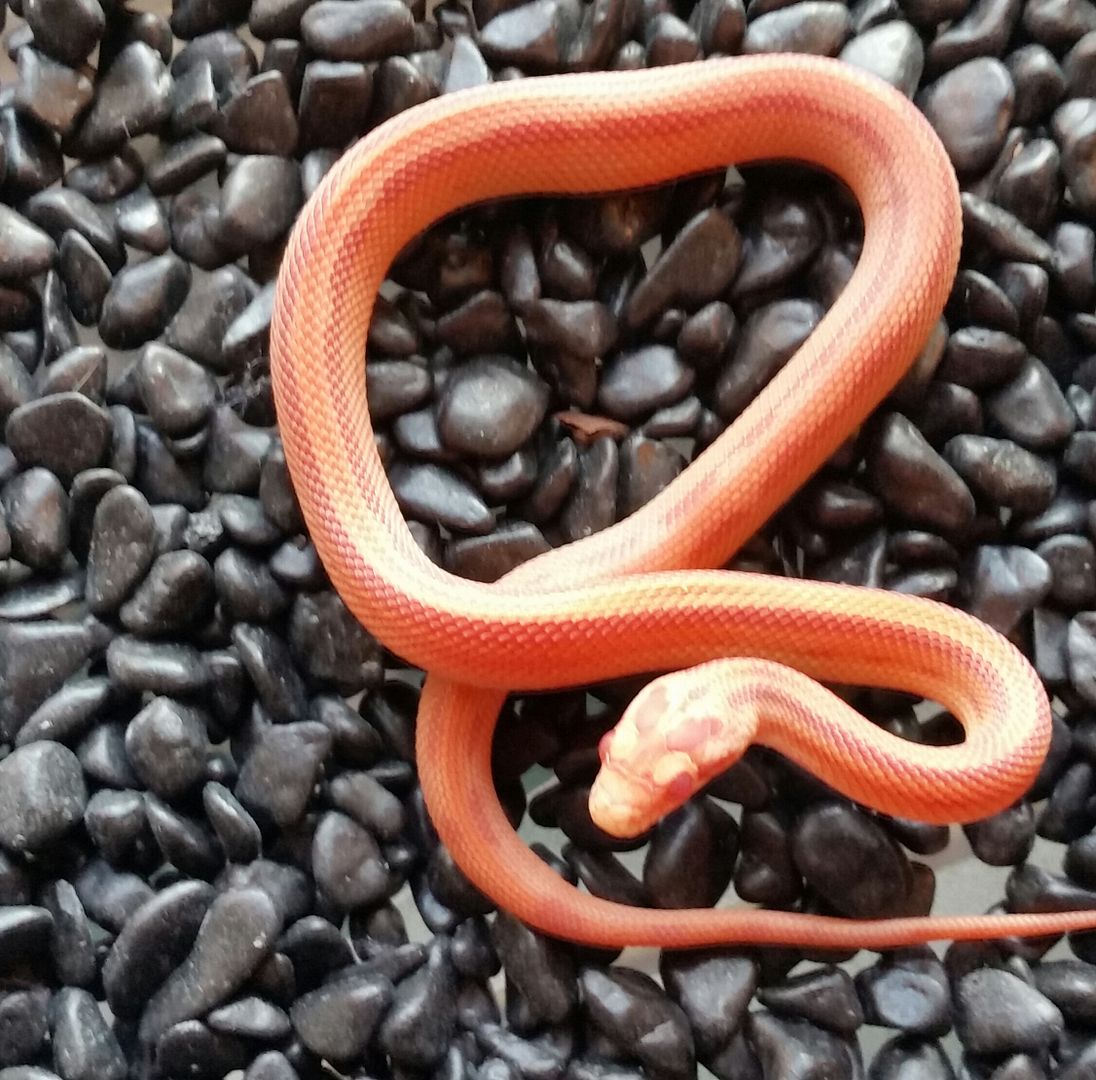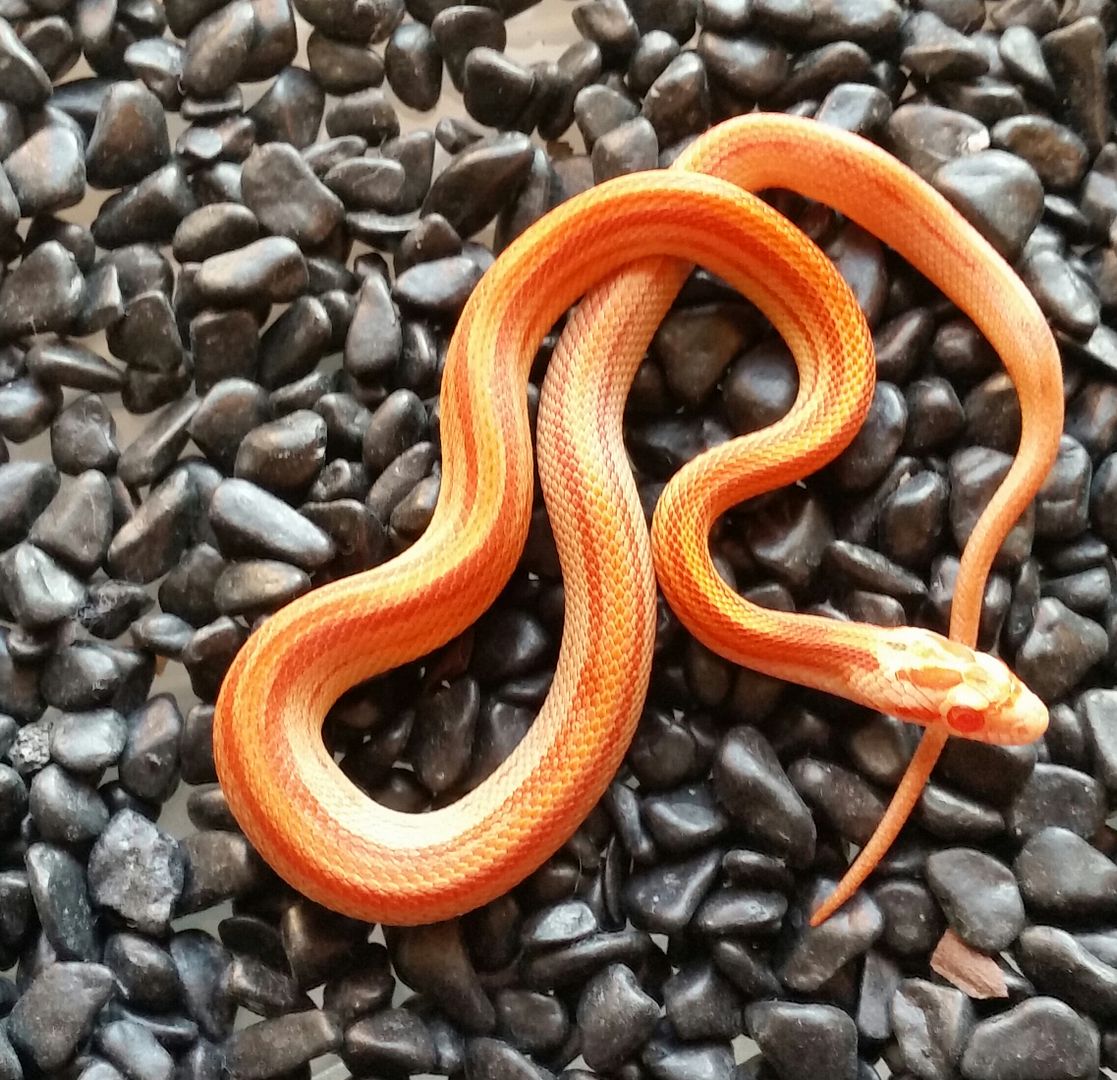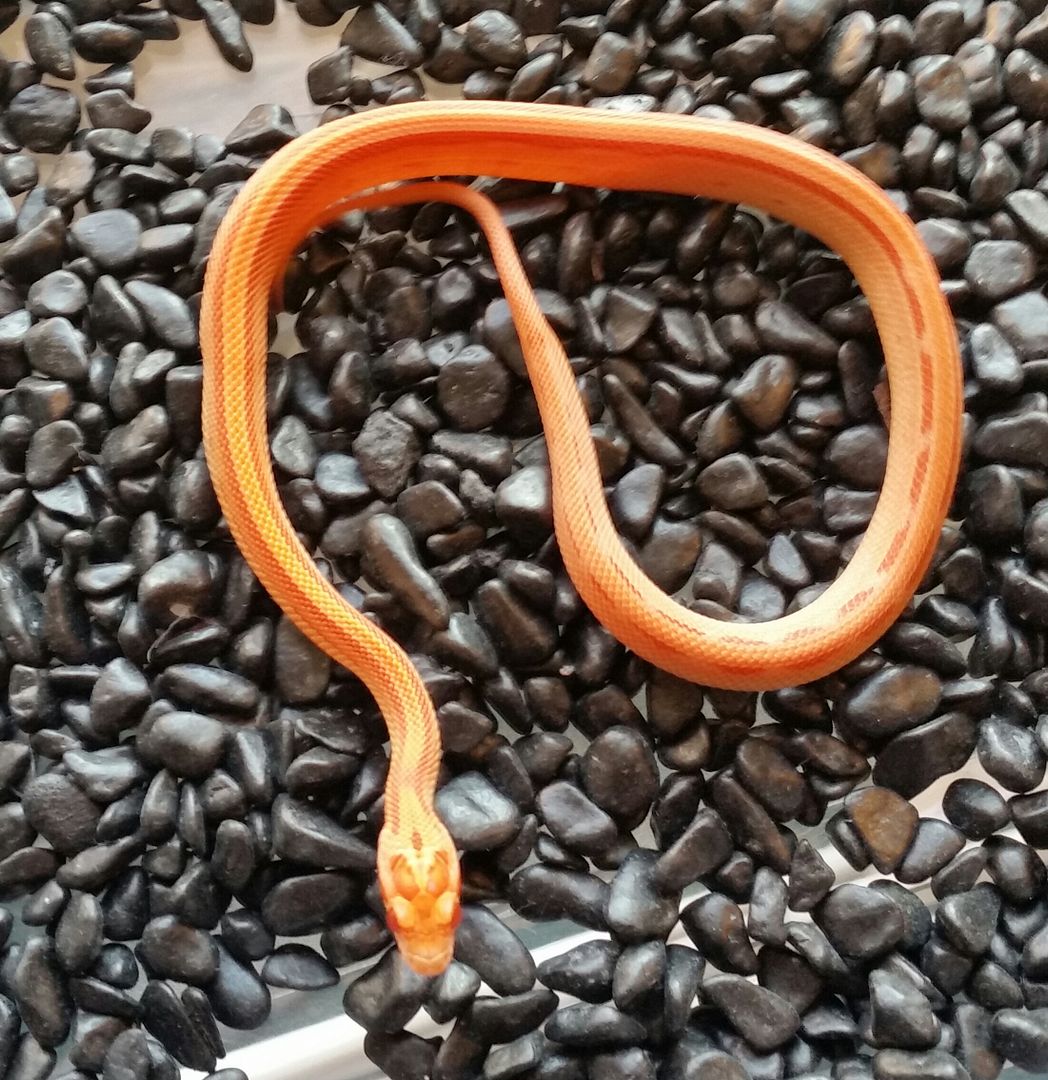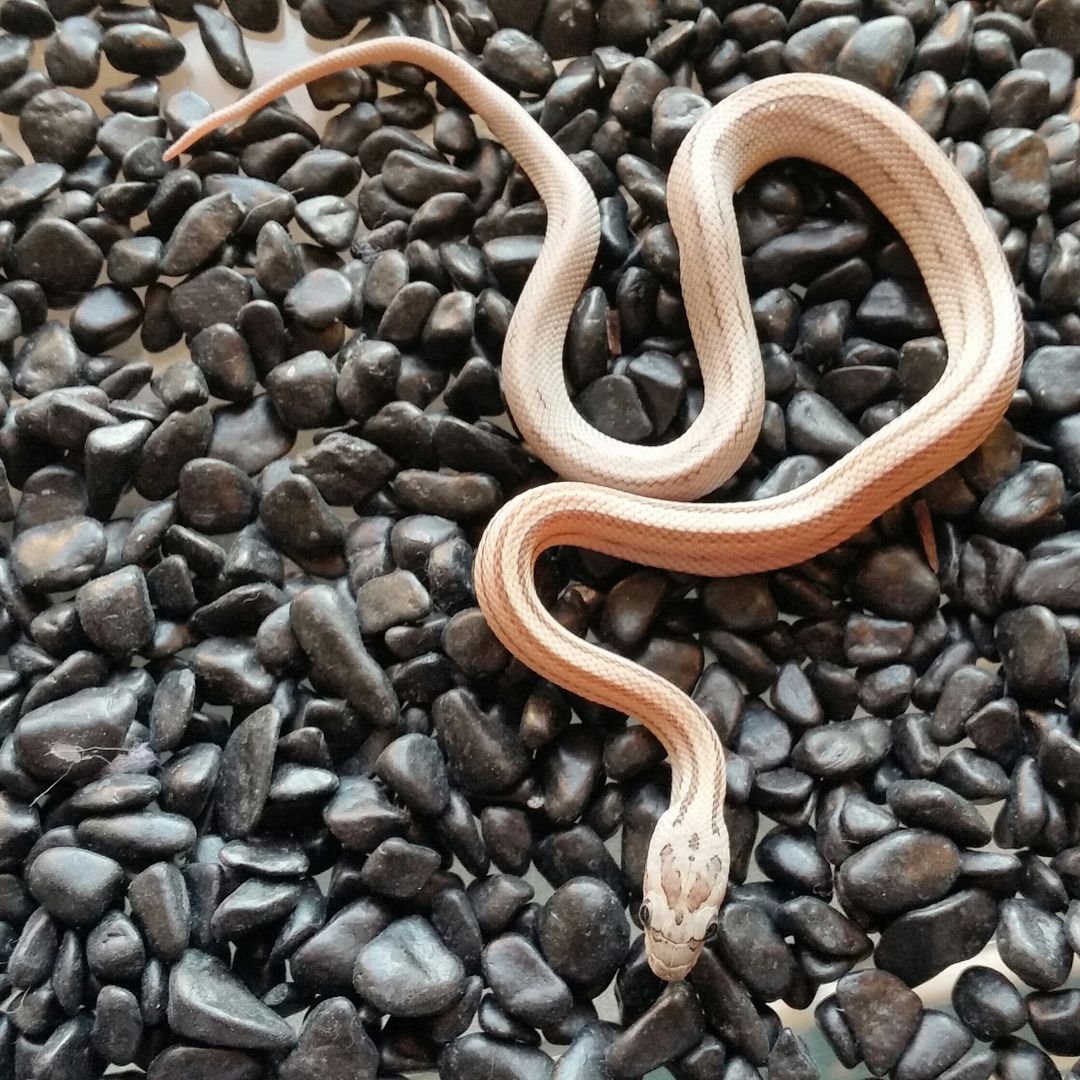wendhend
Kind of Corny
If anyone was still doubting our identification of striped tesseras as the vanishing-striped, reduced head-patterned, little-or-no lateral stripe pheno, my suspected tessera male came through: his girlfriend's modest clutch produced 2/8 definite tesseras.
The breeding was (presumed) Tessera Stripe het Blood, Pied 66% Hypo x Hypo Pied Blood. I deliberately chose a female without motley or stripe to avoid confusion and produce plain ol' tesseras.
Though I showed him earlier in the thread, for clarity, here is the male's hatchling shot again. Then a shot of his (very cloudy) progeny: a Pied(?) Bloodred Tessera on top, and a Hypo Tessera below.
Nice babies, Catherine! I would love to see how that pied(?) bloodred tessera turns out looking as an adult!


